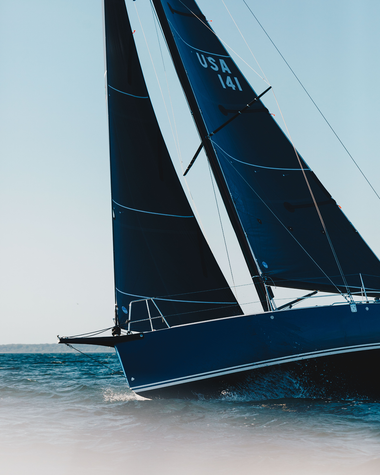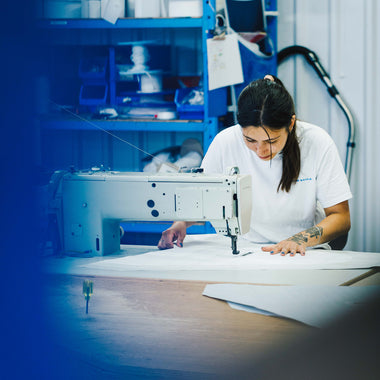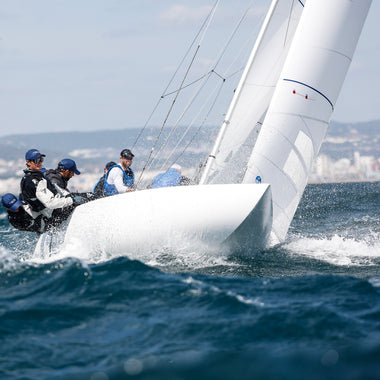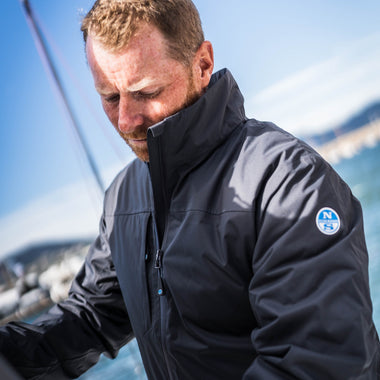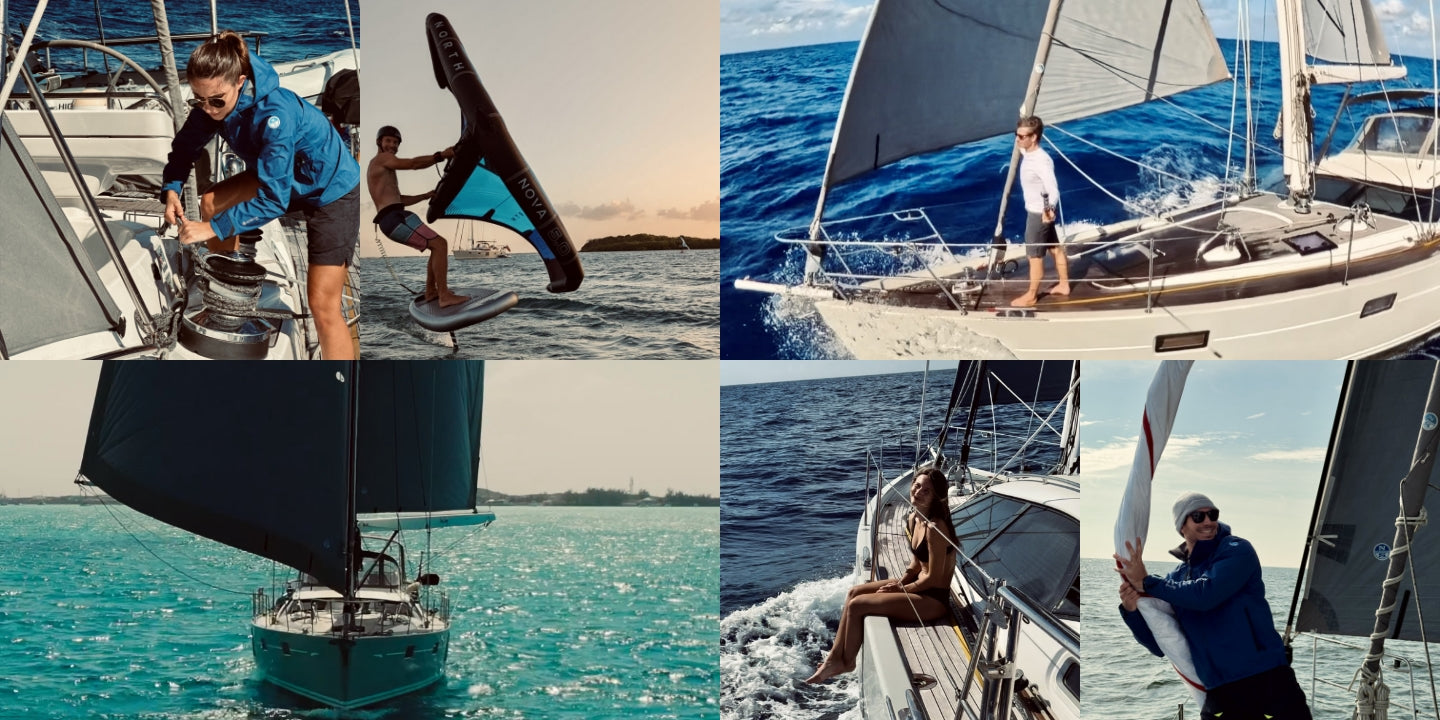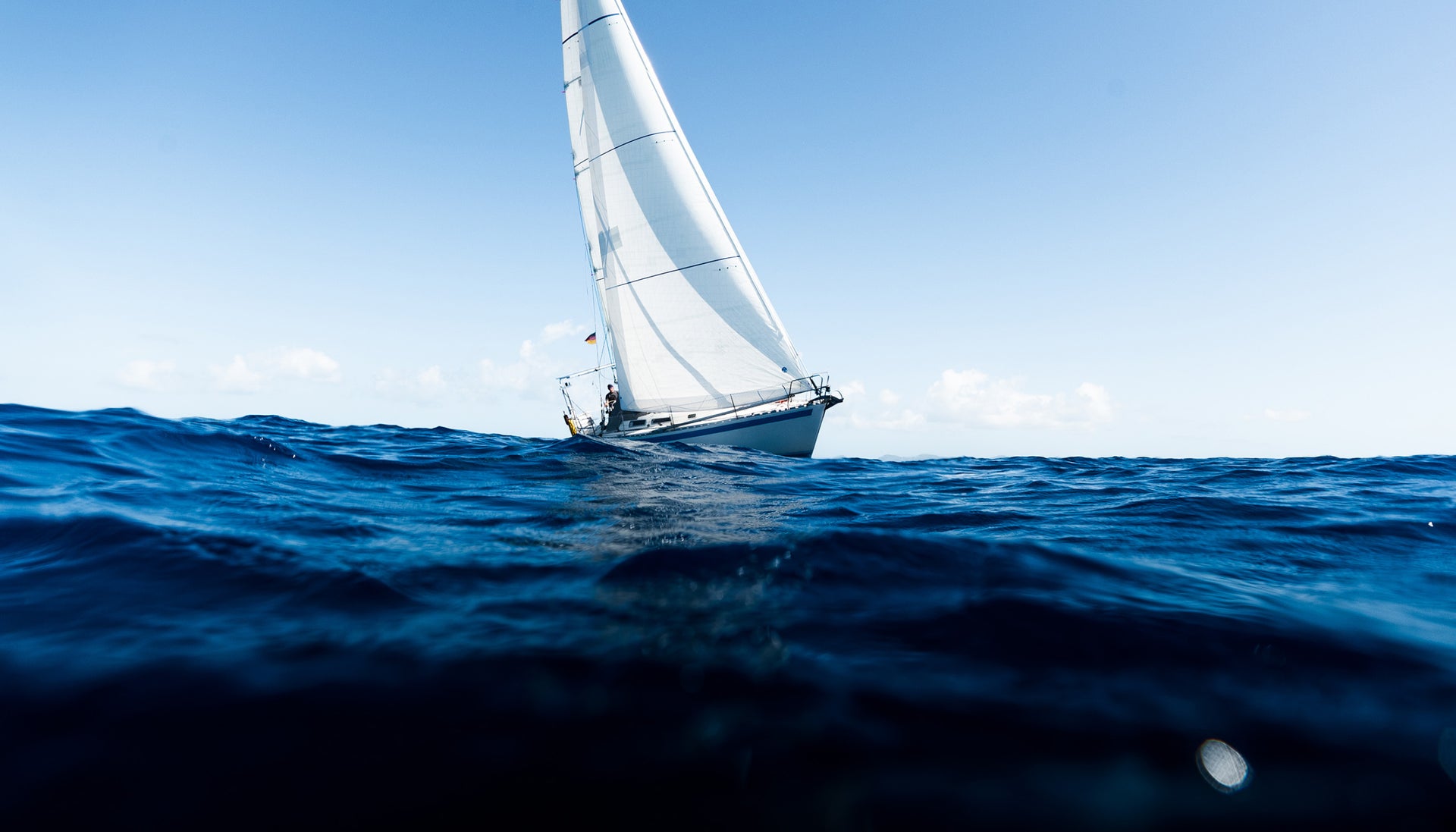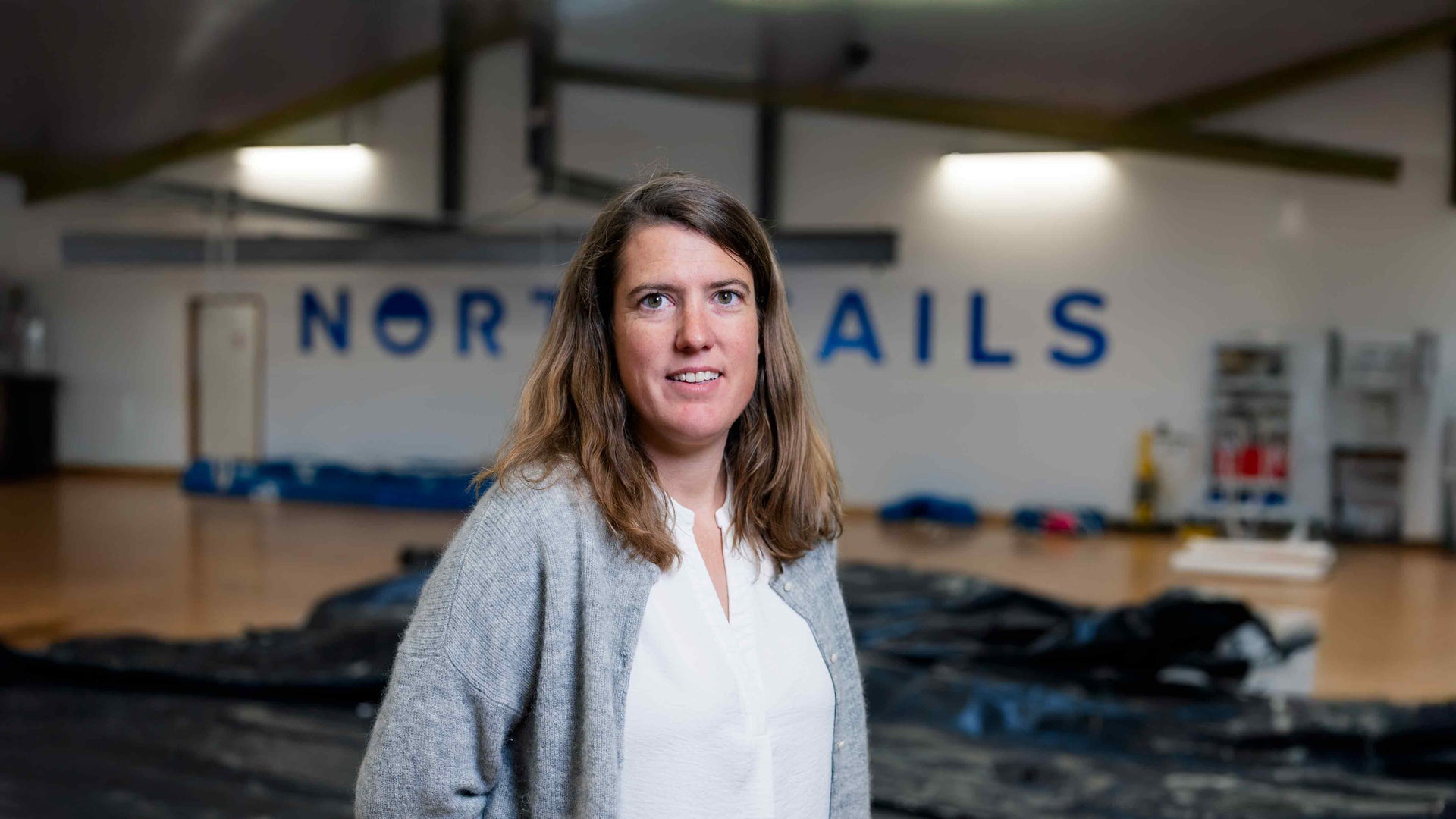FROM LIGHTNING STRIKES TO TRADE WINDS: THE SALTY CRUISERS’ OFFSHORE PASSAGE TO THE BVIS
Anaïs, Elliot, and their dog North, also known as The Salty Cruisers, recount stories from their recent journey between Annapolis and the British Virgin Islands.
First off, can you tell us a little about yourselves?
Hey North Sails family! We're Anaïs, Elliot, and North, the four-legged crew member who insists on napping during night watches. If you've followed our journey on Instagram (@the_saltycruisers), you’ll know we recently sailed from Annapolis to the British Virgin Islands. It was one for the books: over 1,700 nautical miles, 10 days offshore, and a full spectrum of ocean moods.
We’re stoked to partner with North Sails Performance Clothing, not just because of the gear (which, let’s be honest, saved our butts more than once on this passage), but because we share the same spirit of adventure, resilience, and deep respect for the ocean.
What inspired you to travel from Annapolis down to the BVIs?
After a lightning strike in the Bahamas fried almost all of our electronics on Rum Diary (navigation, comms, autopilot, refrigeration), at the end of the 2024 Caribbean season, we found ourselves with a boat that was barely functional. We were in shock, but there wasn’t time to dwell. It was the end of May and our insurance policy didn’t cover us in the hurricane belt past 1st June. The Bahamas were right in the middle of it. We had to move. Fast. With no electronics, we sailed Rum Diary over 1,000 nautical miles north to Annapolis, mostly blind, mostly old school.
That summer was all grit. We pulled the mast, rewired the entire boat, rebuilt systems from scratch. Blood, sweat, and wire. By autumn, she was stronger than ever. But we hadn’t tested her offshore yet. And so, as hurricane season eased and the cold crept closer, we pointed her south again: a 1,700-nautical-mile passage back to the British Virgin Islands, a place we’d fallen in love with the season before. We dreamed of returning to those clear waters, kitesurfing in Eustatia Sound, and soaking in that laid-back magic of the BVIs.
Ten days at sea. Three of us on board. One rebuilt boat. This was the real test to see what Rum Diary was truly made of. And what we were made of too.

What kind of prep did you do before setting off? Did you sail just the two of you, or recruit some extra crew?
For weeks, we’d been scanning charts and forecasts, waiting for the right moment. Finally, a window opened. Five days of steady 20-knot downwind breeze, followed by a light patch, then the promise of south-easterly trades that would carry us all the way to the islands on a sweet beam reach. It would be our first time sailing this route and our first real offshore test since the rebuild. Excitement doesn’t quite cover it. Just trading our city clothes for sailing gear felt like a victory. After months docked and dusty, we were finally going sailing again.
As the forecast held, Anaïs dove into provisioning mode. Fresh fruit and veg filled the galley, and she batch-cooked hearty meals to keep things simple underway. No drama, just good food ready when we needed it. Our good friend Mike joined us for the passage. He’s not a sailor by trade, but the sea’s in his blood. Former Navy, raised by a commercial fisherman. He and his wife dream of owning their own sailboat one day, and this was his chance to feel the full experience. We promised him the real deal.
He got it.
What sort of conditions did you face on passage and how did you handle the boat when things got challenging?
The early days were bliss. Broad reaching on a heading south of Bermuda, 8 knots on a silky swell. Our North Sails 3Di sails were trimmed to perfection, Rum Diary slicing through the blue like she was born for it. It was everything offshore sailing should be.
Then the wind built. Quite frankly, we had no idea what we were about to face and it certainly wasn’t in the forecast!
We’ve sailed through tough stuff before. Crossing from the UK to the Med, riding out squalls mid-Atlantic. Steady 30s? Not ideal, but familiar. We know how to handle it. But that doesn’t make it comfortable. The sea turned ugly fast. We were rocking hard, waves slamming the hull, spray flying across the decks. It was cold, grey, miserable.
Then came the crème de la crème. Sunday night, it peaked. Sustained 45 knots. Gusts into the upper 50s. The cockpit was soaked, visibility gone. Everyone was clipped in, lifejackets on, full "ready" mode. The waves, some easily six metres, were no longer just waves. They were mountains, white crested and angry, smashing down with the weight of freight trains.
One broke hard enough to throw Elliot clean across the cockpit. After that, Elliot made the call. Everyone was to stay down below, quite literally battening down the hatches, with only him coming up for periodic checks. We set the boat up for the peak winds we were seeing, reefed down to half a staysail. It was really just a case of checking for any wear or failed equipment and keeping an eye out for traffic.
It was scary but also electric. Get it? We were in control of the boat, but this... this was something else. The adrenaline was real. The worst part for Anaïs was the waves:
“I remember being inside the boat, seeing these walls of water slam the side, and then suddenly I was tossed across to the other side like nothing. The power of the ocean reminding us just how small we are.” And the most chilled creature on board? North, our dog, snoring like it was just another nap at anchor.
For 48 hours, we lived in survival mode. Sleep was a distant memory. We took turns on watch, silently willing the sea to calm.
Then came the punch to the gut.
The life raft was gone. Ripped clean off its bracket. One less safety net. One more reason to keep it together.
But even then, cold and beyond exhausted, we were still here. Still moving. Still fighting. Still a crew. We didn’t fall apart. There was no panic, no breakdowns. Just us, showing up again and again. For each other, for the boat, for the sea. Our resilience wasn’t loud. It was in the small, quiet moments when we knew we had to keep pushing, no matter how tough it got.
And maybe that was the most beautiful thing of all. The strength we didn’t even know we had. That, and the ability to push way beyond typical sleep deprivation!

After the storm
When the storm finally passed and the wind dropped, we thought we were in the clear. Maybe, just maybe, we’d catch a break. We fired up the engine and were greeted by another challenge: ‘electronic throttle failure’. Another little ghost from the lightning strike? Who knows.
The irony? We’ve crossed oceans before with no engine at all. Yet somehow, at that moment, it felt more overwhelming than ever. By now, we were basically zombies. Wet, cold, utterly spent. But we found a workaround. A tiny grub screw on the solenoid (it’s a hydraulic transmission). Just enough to get the engine going but only in gear. No neutral. No throttle control. Limping along at 1200 rpm.
It wasn’t ideal, but we didn’t care. We were moving. We had a sliver of control again.
And then... the shift
The trades filled in. Warm wind. Gentle roll. Bright skies. But first, the much-needed relief: showers. (Yes, we hadn’t mentioned it earlier. After days of saltwater, sweat, and the smell of hard work, rinsing it all off was pure bliss.)
We sat down to a real meal, with no plates flying around. We all had our sleep turns. We slept deeply, without the boat tossing us left and right. For the first time in what felt like forever, we could just rest. Later, we caught mahi mahi. A king mackerel. Laughed at Mike’s fish stories. Started the BBQ. It was a perfect return to normality.
Mike had been solid. Never complained, never questioned. He got the trial by fire he asked for and came through with quiet grit.
How did you decompress after such a testing journey?
Ten days at sea. Just under 1,700 miles. We reached the BVIs under sail, engine still stuck in gear. Dropped anchor the old-fashioned way.
We were stoked to be back, one of our favourite places. We threw the dinghy in and, after sorting out customs, we headed to the beach. Stretched our legs. Took it all in. North was beyond excited, running up and down the shore, tail wagging nonstop. We had a beautiful 15 knots of trade wind breeze, so Elliot wasted no time in pumping up some wings to go foiling (he hadn’t stopped talking about how excited he was for the whole trip South).
The night was perfect. Cold drinks. Good food. A few competitive rounds of Jenga. Laughter at the smallest things. Just simple joy and the best kind of reward after everything.

What were the biggest lessons you learned during this offshore passage?
The biggest lesson? Simple: It’s not just about the gear or the boat. It’s about the people and how you face adversity together.
Out there, we realised resilience isn’t just a word. It’s a practice. You can’t rely on just sails or tech. It’s the crew. It’s you. Staying calm when things go south. Finding your rhythm, even in chaos.
We can’t talk about offshore gear without shouting out North Sails Performance Clothing. It kept us warm, dry, and able to think straight, no matter how hard the sea threw at us. In the worst moments, it kept us functional. Our 3Di sails? Absolute legends. In the fiercest winds, they didn’t flinch. They held steady, keeping us on course when everything else was chaos. That kind of trust in your gear? It’s everything.
What would we add next time? Offshore boots. Because soaked socks and freezing toes for days is a special kind of misery. Trust us. 48 hours of wet socks on a boat in the North Atlantic is a spiritual experience.
North, the Real Captain
You thought we’d end this without talking about North, the real captain onboard? Let's be real. We get so many questions: How’s he doing? Does he like sailing? Can dogs live on a boat?
Spoiler: He’s living his best life. North’s been on board since he was a pup. At this point, he's spent more time at sea than on land. His love for the ocean is second only to his obsession with swimming alongside dolphins. (Yes, he’s still trying to become one.) He’s got his routines dialled. Potty mat onboard during long passages. Two walks a day when anchored. His safety gear is non-negotiable: lifejacket, clipped-in at sea.
And honestly? He’s more of a real crew member than some humans we’ve met. If you're thinking of bringing a pet onboard, don’t worry. You’re not alone. There's a whole community out here: dogs, cats, birds, even rabbits (true story). It’s a lifestyle that works for us and we wouldn’t trade it for anything.

Now you’ve fully recovered, what’s next for The Salty Cruisers?
We’re planning to head west to Puerto Rico, then north again to the Bahamas. We've come full circle. From lightning strike chaos to calm after the storm. And we’re beyond excited to keep exploring. To anyone dreaming of doing the same: It’s not always easy. But it’s always worth it.
Fair winds and dry socks,
Anaïs, Elliot & North
@the_saltycruisers
